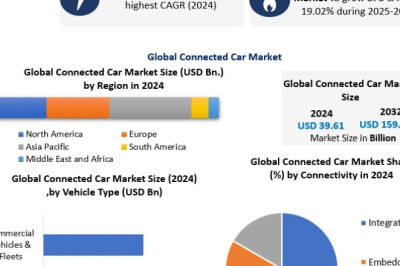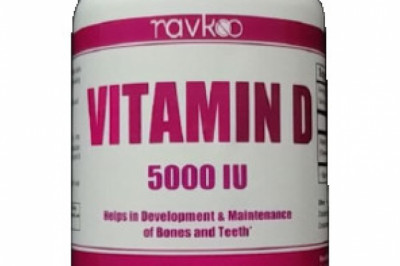views
Best MongoDB Schema for Online Stores on MERN: Practical Guide
Reference :
Introduction
In a MERN build, Node and MongoDB give you room to move, but clear rules still matter. I pick embed vs reference based on cardinality, update frequency, and document growth. I denormalize only where the view needs speed. I back every frequent filter with a compound index that mirrors the query. Those choices reflect MongoDB schema design best practices and lead to a dependable MERN stack MongoDB schema.
Your store gains the most when you design for real flows, not theory. I align products, carts, orders, and inventory so queries stay short and predictable. With that approach, you follow MongoDB schema design for e-commerce principles and move closer to the best MongoDB schema for online store performance from day one.
Why Schema Design Matters in MongoDB for E-commerce?
Product grids, PDP views, carts, and checkout hit the database nonstop. A model that matches those paths cuts latency and lifts conversion. Basically, I align the structure to the hottest reads first, then I shape writes so stock stays correct and orders remain traceable.
Grid and PDP reads: I place frequently read fields (price, stock, primary image, rating summary) inside the product document. I keep shapes predictable so projections stay lean. This pattern supports MongoDB schema design for e-commerce, where every millisecond matters.
Cart accuracy: I embed cart items for fast reads and totals. I copy key product fields (title, price, sku) at add-to-cart time to protect against mid-session price changes.
Order integrity: I treat orders as immutable records. I embed line items and the shipping address. I reference payment or shipment records that evolve separately.
Inventory truth: I keep one document per SKU in an inventory collection. I run atomic decrements at checkout to prevent oversell during spikes.
Search and filters: I build compound indexes that mirror real filters (category, active, price). I push equality fields first, then range fields for stable scans.
Reporting without drag: I store denormalized counters (rating count, average, sales count) for dashboards, then I run heavier analytics offline.
This focus on read patterns, immutability, and precise indexing produces the best MongoDB schema for online store growth. It also keeps MongoDB data modeling e-commerce clear and maintainable while the app scales.
Key Principles of MongoDB Schema Design
Follow clear, repeatable patterns so your catalog, cart, and checkout stay fast. These principles map directly to MongoDB schema design best practices and produce a dependable MERN stack MongoDB schema for real traffic.
-
Model for your hottest reads.
-
List pages and PDPs drive revenue, so place price, stock, primary image, and rating summary inside the product document.
-
Embed when data travels with its parent.
-
Keep cart line items and order line items inside their parent docs.
-
Copy product title, SKU, and unit price at add-to-cart and at purchase time to lock the snapshot.
-
Reference when growth explodes or many parents point to one child.
-
Point products to categories; point orders to payment records; point shipments to carriers.
-
Bound array sizes.
-
Cap variants, media, and attributes.
-
Split large, unbounded lists (e.g., reviews) into their own collection with pagination.
-
Store prices as integers (cents) with a currency code. Avoid floating math in queries and pipelines.
-
Build compound indexes that mirror real filters: { categoryId: 1, active: 1, price: 1 }. Place equality fields first, then range fields for stable scans.
-
Prefer range pagination on _id or price with a “last seen” cursor. Skip deep skip.
-
Maintain totals on carts, salesCount on products, and a compact ratingsSummary.
-
Refresh in the write path or with a short async job.
-
Protect inventory with per-SKU docs.
-
Store one document per SKU and run atomic decrements at checkout.
-
Track reserved vs stock to survive spikes.
-
Track priceVersion or catalogVersion so orders and refunds resolve the correct price and tax rules.
Designing an E-commerce Schema in MongoDB
Design around the paths that shoppers hit every minute. Build a compact layout that keeps reads short and writes predictable. The plan below follows MongoDB schema design best practices and fits a production MERN stack MongoDB schema.
It also aligns with MongoDB schema design for e-commerce patterns and supports MongoDB data modeling e-commerce goals, so you can reach the best MongoDB schema for online store performance early.
Core collections
products, categories, users, carts, orders, inventory, payments
products — embed bounded details, reference shared ones
{
"_id": { "$oid": "..." },
"slug": "tee-classic-black",
"title": "Classic Tee",
"brand": "Acme",
"categoryId": { "$oid": "..." },
"price": 1299, // cents
"currency": "USD",
"variants": [
{ "sku": "TEE-BLK-S", "size": "S", "color": "Black" },
{ "sku": "TEE-BLK-M", "size": "M", "color": "Black" }
],
"media": [{ "url": "/img/tee1.jpg", "alt": "Front" }],
"attrs": { "fit": "regular", "material": "cotton" }, // bounded
"rating": { "avg": 4.6, "count": 312 },
"active": true,
"createdAt": { "$date": "2025-09-01T10:00:00Z" },
"updatedAt": { "$date": "2025-09-01T10:00:00Z" }
}
-
Embed variants, media, and small attrs.
-
Reference categoryId.
-
Store money as integers plus currency.
categories — small tree with optional parent
{ "_id": { "$oid": "..." }, "slug": "tshirts", "name": "T-Shirts", "parentId": null }
users — only auth and checkout needs
{
"_id": { "$oid": "..." },
"email": "user@store.com",
"password": "<bcrypt>",
"addresses": [
{ "label": "Home", "line1": "12 Baker St", "city": "NYC", "country": "US", "zip": "10001" }
],
"createdAt": { "$date": "2025-09-01T10:00:00Z" }
}
carts — embed line items for fast reads
{
"_id": { "$oid": "..." },
"userId": { "$oid": "..." },
"items": [
{ "productId": { "$oid": "..." }, "sku": "TEE-BLK-M", "title": "Classic Tee", "qty": 2, "price": 1299 }
],
"totals": { "sub": 2598, "tax": 208, "ship": 0, "grand": 2806 },
"currency": "USD",
"updatedAt": { "$date": "2025-09-01T10:05:00Z" }
}
Copy title, sku, and price at add-to-cart time to protect the session.
orders — immutable snapshot of the sale
{
"_id": { "$oid": "..." },
"orderNo": "ORD-24000123",
"userId": { "$oid": "..." },
"items": [
{ "productId": { "$oid": "..." }, "title": "Classic Tee", "sku": "TEE-BLK-M", "qty": 2, "price": 1299 }
],
"address": { "line1": "12 Baker St", "city": "NYC", "country": "US", "zip": "10001" },
"payment": { "status": "paid", "method": "card", "ref": "pi_123" },
"totals": { "sub": 2598, "tax": 208, "ship": 0, "grand": 2806 },
"currency": "USD",
"placedAt": { "$date": "2025-09-01T10:06:00Z" },
"status": "processing"
}
-
Embed line items and address to lock the snapshot.
-
Reference payments when you store gateway details.
inventory — one document per SKU
{ "_id": "TEE-BLK-M", "productId": { "$oid": "..." }, "stock": 120, "reserved": 4, "location": "WH-1" }
-
Run atomic decrement on checkout.
-
Track reserved during pending payments.
payments — reference from orders
{
"_id": { "$oid": "..." },
"orderId": { "$oid": "..." },
"provider": "stripe",
"intentId": "pi_123",
"status": "succeeded",
"amount": 2806,
"currency": "USD",
"createdAt": { "$date": "2025-09-01T10:06:10Z" }
}
Embed vs reference quick map
-
Product → embed variants, media, attrs (bounded).
-
Product → reference category.
-
Cart → embed items and totals.
-
Order → embed items, address, reference payments and shipments.
-
Inventory → single-SKU docs, referenced by product and order flows.











